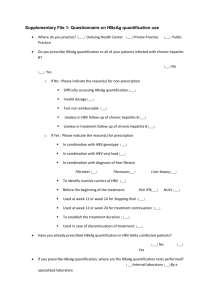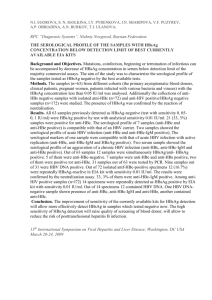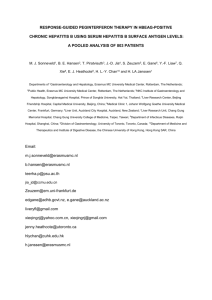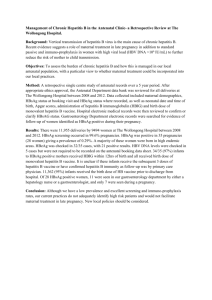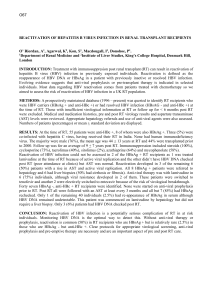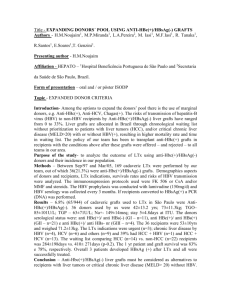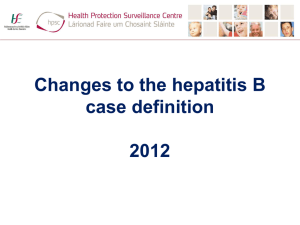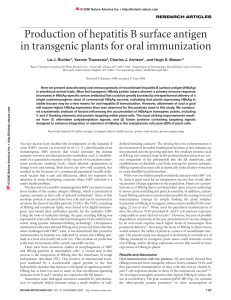20_HBsAg0.01_angl
advertisement
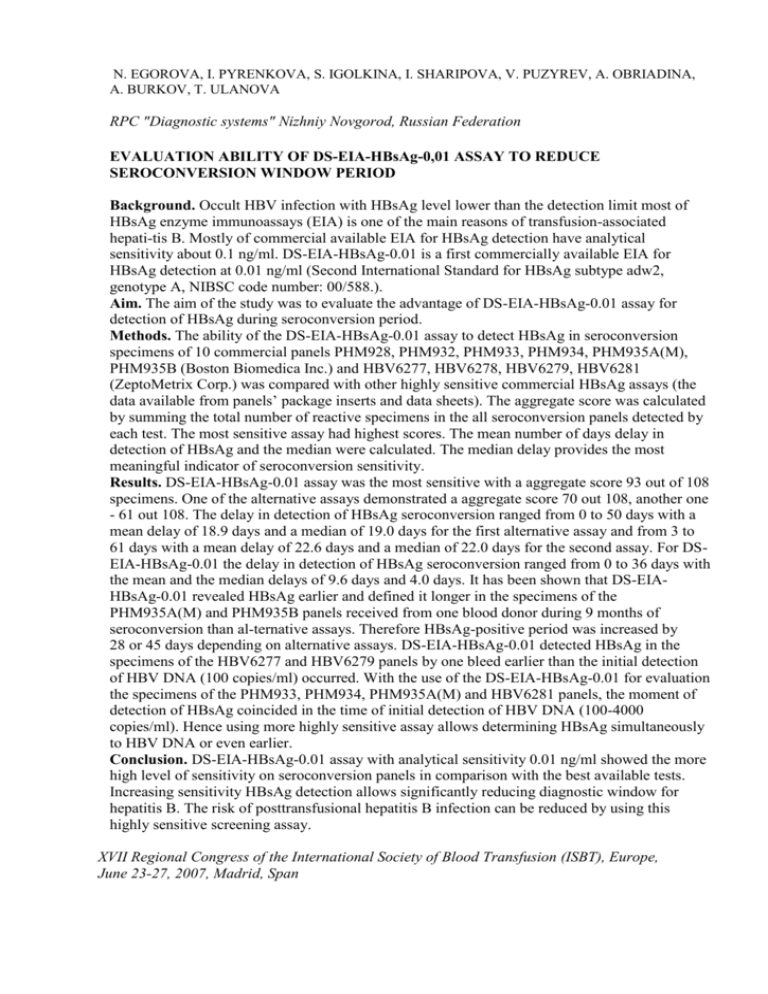
N. EGOROVA, I. PYRENKOVA, S. IGOLKINA, I. SHARIPOVA, V. PUZYREV, A. OBRIADINA, A. BURKOV, T. ULANOVA RPC "Diagnostic systems" Nizhniy Novgorod, Russian Federation EVALUATION ABILITY OF DS-EIA-HBsAg-0,01 ASSAY TO REDUCE SEROCONVERSION WINDOW PERIOD Background. Occult HBV infection with HBsAg level lower than the detection limit most of HBsAg enzyme immunoassays (EIA) is one of the main reasons of transfusion-associated hepati-tis В. Mostly of commercial available EIA for HBsAg detection have analytical sensitivity about 0.1 ng/ml. DS-EIA-HBsAg-0.01 is a first commercially available EIA for HBsAg detection at 0.01 ng/ml (Second International Standard for HBsAg subtype adw2, genotype A, NIBSC code number: 00/588.). Aim. The aim of the study was to evaluate the advantage of DS-EIA-HBsAg-0.01 assay for detection of HBsAg during seroconversion period. Methods. The ability of the DS-EIA-HBsAg-0.01 assay to detect HBsAg in seroconversion specimens of 10 commercial panels PHM928, PHM932, PHM933, PHM934, PHM935A(M), PHM935B (Boston Biomedica Inc.) and HBV6277, HBV6278, HBV6279, HBV6281 (ZeptoMetrix Corp.) was compared with other highly sensitive commercial HBsAg assays (the data available from panels’ package inserts and data sheets). The aggregate score was calculated by summing the total number of reactive specimens in the all seroconversion panels detected by each test. The most sensitive assay had highest scores. The mean number of days delay in detection of HBsAg and the median were calculated. The median delay provides the most meaningful indicator of seroconversion sensitivity. Results. DS-EIA-HBsAg-0.01 assay was the most sensitive with a aggregate score 93 out of 108 specimens. One of the alternative assays demonstrated a aggregate score 70 out 108, another one - 61 out 108. The delay in detection of HBsAg seroconversion ranged from 0 to 50 days with a mean delay of 18.9 days and a median of 19.0 days for the first alternative assay and from 3 to 61 days with a mean delay of 22.6 days and a median of 22.0 days for the second assay. For DSEIA-HBsAg-0.01 the delay in detection of HBsAg seroconversion ranged from 0 to 36 days with the mean and the median delays of 9.6 days and 4.0 days. It has been shown that DS-EIAHBsAg-0.01 revealed HBsAg earlier and defined it longer in the specimens of the PHM935A(M) and PHM935B panels received from one blood donor during 9 months of seroconversion than al-ternative assays. Therefore HBsAg-positive period was increased by 28 or 45 days depending on alternative assays. DS-EIA-HBsAg-0.01 detected HBsAg in the specimens of the HBV6277 and HBV6279 panels by one bleed earlier than the initial detection of HBV DNA (100 copies/ml) occurred. With the use of the DS-EIA-HBsAg-0.01 for evaluation the specimens of the PHM933, PHM934, PHM935A(M) and HBV6281 panels, the moment of detection of HBsAg coincided in the time of initial detection of HBV DNA (100-4000 copies/ml). Hence using more highly sensitive assay allows determining HBsAg simultaneously to HBV DNA or even earlier. Conclusion. DS-EIA-HBsAg-0.01 assay with analytical sensitivity 0.01 ng/ml showed the more high level of sensitivity on seroconversion panels in comparison with the best available tests. Increasing sensitivity HBsAg detection allows significantly reducing diagnostic window for hepatitis B. The risk of posttransfusional hepatitis B infection can be reduced by using this highly sensitive screening assay. XVII Regional Congress of the International Society of Blood Transfusion (ISBT), Europe, June 23-27, 2007, Madrid, Span
